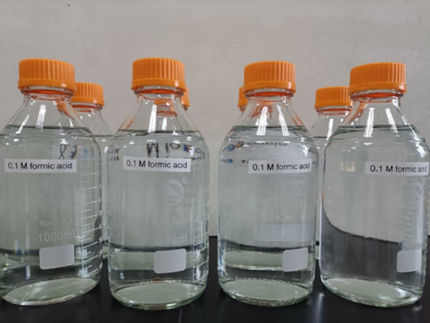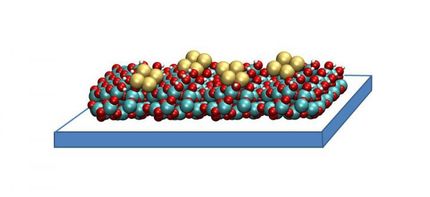New catalyst efficiently turns carbon dioxide into useful fuels and chemicals
By efficiently converting CO2 into complex hydrocarbon products, a new catalyst could potentially aid in large-scale efforts to recycle excess carbon dioxide
Advertisement
As levels of atmospheric carbon dioxide continue to climb, scientists are looking for new ways of breaking down CO2 molecules to make useful carbon-based fuels, chemicals and other products. Now, a team of Brown University researchers has found a way to fine-tune a copper catalyst to produce complex hydrocarbons -- known as C2-plus products -- from CO2 with remarkable efficiency.

By efficiently converting CO2 into complex hydrocarbon products, a new catalyst developed by a team of Brown researchers could potentially aid in large-scale efforts to recycle excess carbon dioxide (symbolic image).
Chris_LeBoutillier, pixabay.com
In a study published in Nature Communications, the researchers report a catalyst that can produce C2-plus compounds with up to 72% faradaic efficiency (a measure of how efficiently electrical energy is used to convert carbon dioxide into chemical reaction products). That's far better than the reported efficiencies of other catalysts for C2-plus reactions, the researchers say. And the preparation process can be scaled up to an industrial level fairly easily, which gives the new catalyst potential for use in large-scale CO2 recycling efforts.
"There had been reports in the literature of all kinds of different treatments for copper that could produce these C2-plus with a range of different efficiencies," said Tayhas Palmore, the a professor of engineering at Brown who co-authored the paper with Ph.D. student Taehee Kim. "What Taehee did was a set of experiments to unravel what each of these treatment steps was actually doing to the catalyst in terms of reactivity, which pointed the way to optimizing a catalyst for these multi-carbon compounds."
There have been great strides in recent years in developing copper catalysts that could make single-carbon molecules, Palmore says. For example, Palmore and her team at Brown recently developed a copper foam catalyst that can produce formic acid efficiently, an important single-carbon commodity chemical. But interest is increasing in reactions that can produce C2-plus products.
"Ultimately, everyone seeks to increase the number of carbons in the product to the point of producing higher carbon fuels and chemicals," Palmore said.
There had been evidence from prior research that halogenation of copper -- a reaction that coats a copper surface with atoms of chlorine, bromine or iodine in the presence of an electrical potential -- could increase a catalyst's selectivity of C2-plus products. Kim experimented with a variety of different halogenation methods, zeroing in on which halogen elements and which electrical potentials yielded catalysts with the best performance in CO2-to-C2-plus reactions. He found that the optimal preparations could yield faradaic efficiencies of between 70.7% and 72.6%, far higher than any other copper catalyst.
The research helps to reveal the attributes that make a copper catalyst good for C2-plus products. The preparations with the highest efficiencies had a large number of surface defects -- tiny cracks and crevices in the halogenated surface -- that are critical for carbon-carbon coupling reactions. These defect sites appear to be key to the catalysts' high selectivity toward ethylene, a C2-plus product that can be polymerized and used to make plastics.
Ultimately, such a catalyst will aid in large-scale recycling of CO2. The idea is to capture CO2 produced by industrial facilities like power plants, cement manufacturing or directly from air, and convert it into other useful carbon compounds. That requires an efficient catalyst that is easy to produce and regenerate, and inexpensive enough to operate on an industrial scale. This new catalyst is a promising candidate, the researchers say.
"We were working with lab-scale catalysts for our experiments, but you could produce a catalyst of virtually any size using the method developed," Palmore said.






























































